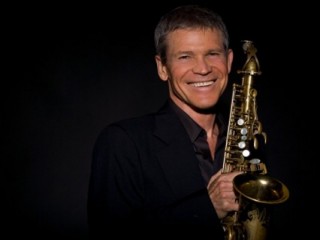
David Sanborn biography
Date of birth : 1945-07-30
Date of death : 2024-05-12
Birthplace : Tampa, Florida, U.S.
Nationality : American
Category : Arts and Entertainment
Last modified : 2024-07-30
Credited as : Saxophone player , Alto saxophonist, Grammy Award winner, Jazz fusion, Session musician, Night Music host
3 votes so far
David Sanborn: Legendary Saxophonist and Musical Innovator
David William Sanborn (July 30, 1945 – May 12, 2024) was an American alto saxophonist renowned for his versatility across various musical genres. Over his illustrious career, Sanborn released more than 20 albums, earned six Grammy Awards, and became one of the most influential saxophonists in contemporary music.
Early Life
David Sanborn was born on July 30, 1945, in Tampa, Florida, and raised in St. Louis, Missouri. He began playing the saxophone at age 11 as therapy for polio. The music scene in St. Louis, rich with rhythm and blues bands, greatly influenced his early development. "What was available to me in St. Louis was rhythm & blues bands," Sanborn remarked in a 1994 interview with Down Beat. He performed with renowned blues artists like Albert King and Little Milton while still a teenager. Sanborn later studied music at Northwestern University under Fred Hemke, further honing his craft.
Career Beginnings
In the late 1960s and early 1970s, Sanborn became a sought-after sideman and session musician. He worked with an array of artists, including Paul Butterfield, with whom he performed at the original Woodstock, Stevie Wonder on the seminal album Talking Book (1972), and David Bowie on the soul classic Young Americans (1975). These early collaborations helped establish Sanborn's reputation in the music industry.
Breakthrough and Solo Success
Sanborn's solo career took off with the release of Taking Off in 1975. The album featured the memorable track "Butterfat" and marked the beginning of his successful solo journey. His 1980 album Hideaway was a significant breakthrough, establishing him as one of pop's premier saxophonists and earning him widespread acclaim. In 1982, Sanborn won his first Grammy Award for the album Voyeur.
Continued Success and Musical Evolution
Sanborn continued to experiment and evolve his sound throughout the 1980s and 1990s. Albums like As We Speak (1982) and Straight to the Heart (1984) showcased his willingness to take musical risks, such as switching between alto and soprano saxophones. His collaboration with Bob James on Double Vision (1987) earned him another Grammy, and he won a third Grammy for Close-Up (1988).
Sanborn's ability to blend jazz with pop, R&B, and other genres made him a staple in the music world. His albums sold millions of copies, earning him one platinum and six gold albums. Notable works from this period include the critically acclaimed Another Hand (1991), which featured collaborations with new-jazz artists like Bill Frisell and traditional jazz heavyweights like Charlie Haden and Jack DeJohnette.
Session Work and Collaborations
Sanborn's skill as a session musician remained in high demand throughout his career. He played with a diverse range of artists, including James Brown, the Rolling Stones, Elton John, and the Eagles. His collaborations with bassist Marcus Miller were particularly noteworthy, with Miller often producing and co-writing many of Sanborn's solo recordings. Sanborn also contributed to several film soundtracks, including the Lethal Weapon series and Scrooged.
Broadcasting and Media
In addition to his recording career, Sanborn was a prominent figure in broadcasting. He hosted the NBC radio program The Jazz Show and the syndicated television series Night Music, which featured performances by a wide array of musical talents. From the late 1980s, he was a regular guest member of Paul Shaffer's band on Late Night with David Letterman. During the COVID-19 pandemic, Sanborn adapted to the changing landscape by hosting virtual master classes and "Sanborn Sessions" from his home.
Personal Life and Legacy
Sanborn was married to his fourth wife, Alice Soyer Sanborn, a pianist, vocalist, and composer. He had one son, Jonathan, a bass player, and two granddaughters. Sanborn died of complications from prostate cancer on May 12, 2024, at the age of 78. He had been diagnosed with the disease in 2018 but continued to influence the music world until his passing.
David Sanborn's impact on music is profound and enduring. His distinctive saxophone sound and ability to blend various genres left a lasting mark on jazz, R&B, and pop music. Critics and peers alike recognized his passionate technique and emotional interpretations, which elevated any recording or live performance he was a part of. Sanborn's legacy lives on through his extensive discography and the countless musicians he inspired throughout his career.
Awards and honors of David Sanborn:
Sanborn won six Grammy Awards and had eight gold albums and one platinum album. Sanborn won Grammy Awards for Voyeur (1981), Double Vision (1986), and the instrumental album Close Up (1988).
In 2004, Sanborn was inducted into the St. Louis Walk of Fame.


















